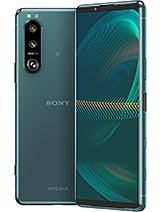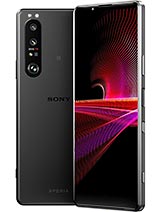Sony Xperia 1 III vs Galaxy S21 Ultra: Camera Comparison By PhoneArena
The Sony, Xperia 1, mark iii is a phone with a unique camera system. It has the world's first zoom lens with variable zoom levels, and it really is a bit of tech, magic, tiny elements inside this lens move, so you can switch between two zoom levels with just one camera. You have 2.9 x and 4.4 x, zoom. The Xperia also has the most advanced manual controls, but is that enough to actually beat one of the best camera phones around the galaxy? S21? Ultra? Hey guys, I'm Vic with phone arena, and I've been using this here, new Sony flagship for nearly a month now- and this is our Xperia versus galaxy camera comparison. So let's first quickly go over the camera hardware. The main camera here on the galaxy is a 108 megapixel, one versus a 12 megapixel snapper on the Sony.
So you still have that resolution advantage on the galaxy and yes, both have optical image stabilization. Then you have 12 megapixel ultra-wide cameras on both, but the one on the galaxy is just a bit wider at 13 millimeters and finally, you have the 12 megapixel new variable, zoom camera on the Sony against two separate zoom cameras on the galaxy one at three times zoom and another one at 10 times zoom. So with all those specs cleared, let's jump right into the actual photos and start picking apart the differences. Shall we alright? Let's kick this off with a comparison of the video recording capabilities of the front cameras, and we have the Xperia one marquee and the galaxy s21 ultra, just in my hands as I walk around and right away. I can see if I stop right here.
The skies look blown out on the opera, where we get a much better dynamic range on the galaxy and also the screen is much brighter on the galaxy, which is very convenient in such super. Well lit conditions. It's super bright outside right now. Also, the galaxy can record video in 4k, while the Xperia max is out at 1080p, not the biggest difference in the world. But what strikes me is just the difference in dynamic range.
Oh, just look at that in my viewfinder. The galaxy really blows the exterior out of the water with a much better dynamic range, and when it comes to the selfies, we have pretty much the same thing. Dynamic range on the galaxy is better and in addition to the wide view, you can also switch to a closer view and selfies that looks better if it's just you and the photo, and you don't have that option on the Xperia and trying a selfie in low light. The galaxy definitely has the upper hand as it captures a lot more of the background and the much brighter photo outdoors on a sunny day. Both look great as you'd expect.
But if you look closer, you would notice how the Xperia tends to crush those darker shadowy areas, and you can barely see any detail there on these next shots. The Sony underexposes the whole photo a little while the galaxy looks correctly exposed and with more vibrant colors, and this seems to be a trend, as you can see in these next few photos, all of them turned out a bit underexposed on the Xperia softer also, and the blue color of the sky is often clipped on the Sony phone and looking at photos shot with the ultra-wide cameras. One difference is just in the perspective. You have a 0.7 x lens on the Sony and a noticeably wider 0.6x lens on the galaxy, so you can capture a bit more with the galaxy notice, how you get a bit more of the landscape around the edges here now, apart from that, I would say there is very little actual difference between the two cameras. You still get more inky skies on the galaxy and more detail in the shadows, but these two ultra white cameras are pretty close.
As for the zoom camera on the Sony, however, it really doesn't live up to the hype, we're starting at 10 times, zoom, where the galaxy has a very clear advantage, as you would expect, but even and when you switch over to the 4.4 x native zoom level, on the Sony and also at the other native zoom at 2.9 x, you can still see how photos don't quite have the sharpness and appear a bit too soft. Now, admittedly, the galaxy goes over the edge with a bit too much sharpening, but the Sony definitely could have better and cleaner defined detail. Now the zoom camera and softer detail, however, comes in particularly handy for portraits. You can take portrait photos with the Xperia at 1x, 2.9, x and even 4.4 x, which is just perfect for face shots, and even the galaxy maxes out only three times zoom for portraits the softer look suits portage shots in particular, but I have to say that I was very surprised to see that portraits, consistently came out way, overexposed on the Sony. Here's the photo taken with portrait mode turned off and then once you turn it on the phone just goes crazy and captures an overexposed image, which is super strange and I hope Sony can fix this in a future update next up, jumping over to video.
The differences are only amplified, especially in this adorable footage of the deer. The vibrant colors from the galaxy sell this shot so much better, and it just looks incredible. While the colors on the Xperia look a bit bleak in comparison and lacking in vibrancy. In this next video recording of the roller coaster, you can again see the much darker exposure on the Xperia and, if you pause it right here for a moment, take a look at the sky on the opera. There's, just no color just clipped highlights.
Well, you can see the blue skies on the galaxy pretty well, and it really stands out when it comes to 4k video, and this is a quick test of the video stabilization on the Xperia 1 mark iii and the galaxy s21 ultra with both phones, just in my hand, as I'm walking, with a brisk base towards the monument. Let me know if you see some differences on my screen here, the Xperia looks lock very solidly. It almost doesn't move so excellent job on the stabilization, but the galaxy seems to have a better dynamic range and if you try and zoom in, of course, the galaxy has the upper hand with that long range zoom camera. There is just no contest. Take a look at this close-up recording at 10 times zoom of the kit climbing the tree.
It looks sharp in detail on the galaxy and much softer and mushier on the Sony and speaking of zooming. We have to mention Sony's camera. Yes, it gives you the option to manually set various controls, but if you're, just casually recording videos in the basic camera mode you'd be surprised to see that you can not switch to the ultra-wide camera once you've started. Recording video with the main one, and neither can you zoom longer than three times zoom, which is just crazy to use the ultrawide camera for video. You have to stop your recording with the main camera, then select the ultrawide camera and start all over again and the same for the zoom camera, which is absurd, and speaking of the camera app on the Sony.
You have some professional controls like these squares here, indicating where your focus is much like on a Sony, dedicated mirrorless camera, and you'll notice that I autofocus detects people and paths and stays locked in very nicely. I tried running towards the camera and most of the photos of that were in focus, which is definitely impressive. So that's nice. I, however, did not use the manual controls all that much and did not shoot raw files for this particular comparison, and you can certainly do this with this camera app. But I felt that this was better addressed in a separate video and honestly being used to just snapping photos quickly on the phone.
It was a bit of a chore having to deal with manual controls. So what about nighttime photos and videos? Well, I would just leave a little teaser from an upcoming camera comparison. One of these phones here is the Xperia and the other is an iPhone, and it really is a night and day difference, and I'm pretty sure you can guess which one is the Sony looking at night photos its clear that the Xperia just doesn't have a proper automatic night mode, as all the images turn out much darker on it, so much so that they're barely usable while the galaxy with the scene optimizer wreaks in a lot more light and the photos look so much better. There's really no comparison. Look at that photo of the road.
The trees on the side are just covered in darkness on the opera, while you can see them clearly on the galaxy, and it's just those shadowy areas looking just way too dark, and you don't even want to try using the ultrawide camera in low light photos on the galaxy turn out already pretty bad, but the ones from the ultrawide camera on the Xperia are plain unusable in dark conditions. So there is that, and this is what low light video recording looks like now we're indoors and just comparing the main cameras recording in 4k video. Let me know if you see any differences and follow me as we move to the next room, so you can see how the light changes and how these two phones react to that. So to move around the studio, you can see the performance of these two phones in low light. So at the end of the day, the Xperia 1 mark iii offers a lot in terms of manual controls and toggles to play around with.
But if you just want a simple camera to just snap and go, it is not really on par with the galaxy s20 ultra. Unfortunately, the hyped variable zoom camera is nice to have and impressive technically but photos from it looks soft and not as sharp and during the day the galaxy has a better dynamic range with the main camera and all around, and when it comes too low light photos, the Xperia falls flat on its face. Now some people will argue that this phone is not about that at all. It's about raw photos and editing in post- and that is also true. But if Sony makes this phone for just that little niche of enthusiasts, it is leaving the regular user behind, and I really hope the company changes its priorities in the future.
But that's just me. Let me know your thoughts about this camera, and would you buy a Sony phone as unique as this one? So that's it for this video thanks for watching subs. If you loved it, and I'll, see you in the next one.
Source : PhoneArena


























